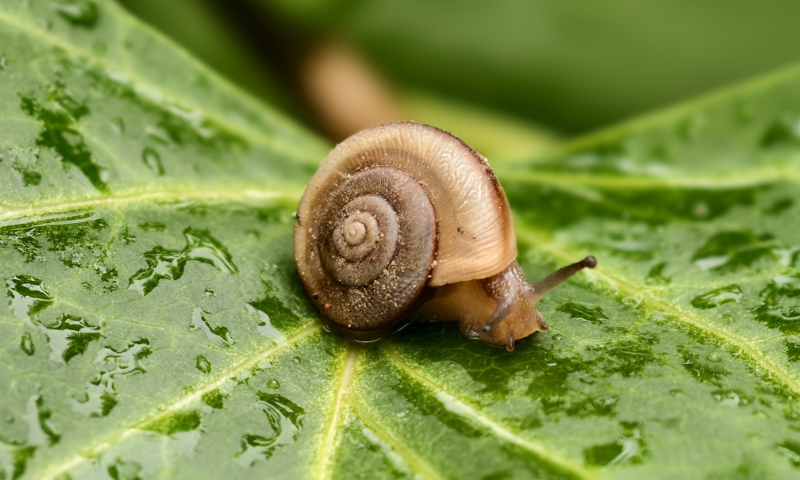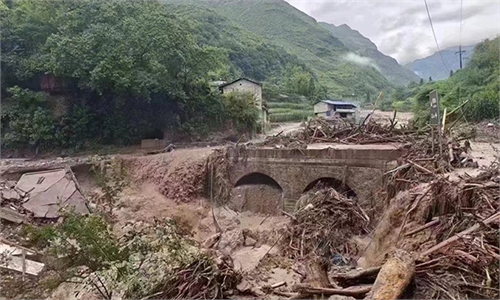Chinese researchers collect snail shells to analyze 'once-in-a-millennium' rainstorm, present potential evidence for predicting future extreme rainstorms

Photo: VCG
Chinese researchers have recently discovered that the composition of land snail shells can be used to reconstruct precipitation levels during extreme rain events, the Institute of Earth Environment of the Chinese Academy of Sciences (IEECAS) told the Global Times on Thursday. This discovery suggests that the future application of this method on fossils could provide new geological evidence for predicting extreme precipitation events in the context of global warming.
The research team collected four land snail shells from Zhengzhou in Central China's Henan Province in 2021, a city that suffered severe waterlogging due to torrential rainstorms in the same year, and found a relationship between the measurement of shell's oxygen isotope composition and precipitation, which was then compared and confirmed with theoretical data, indicating land snail shells could be a record for extreme rain events.
The rainstorm in Zhengzhou, considered a "once-in-a-millennium" event in meteorological statistics, was characterized based on the instrumental data of the past hundred years. Therefore, whether it is a "once-in-a-millennium" disaster or a new more regular event in a warmer world is a pressing question requiring clarification, according to the IEECAS.
The study, for the first time, shows that terrestrial synoptic scale extreme rainstorm events can be reconstructed using land snail shells, with further applications on fossils could potentially reveal the frequency and intensity of extreme rainstorms under different climate background, IEECAS told the Global Times.
Reconstructing such information from fossil shells in the geological past will offer a historical reference for forecasting future extreme precipitation scenarios amid a rapid warming trend. This data can also be utilized to evaluate the precision of current climate models in reacting to external changes and in simulating extreme weather occurrences.
Extreme weather events, such as rainstorms and typhoons, which happen within a short timeframe and pose significant risks, are crucial and challenging aspects of climate change research. However, the time span covered by instrumental data is usually less than 200 years, which restricts people's understanding of these extreme weather events.
Paleoclimate data serves as a crucial complement to modern instrumental data, but the traditional terrestrial paleoclimate studies often have low temporal resolution, only capable of reconstructing average climate changes over seasons or years. This limitation makes it challenging to study extreme weather events occurring at the day-hour scale.
The study, however, suggests that land snail shell fossils can serve as a new high-resolution proxy indicator for reconstructing the frequency and intensity of extreme precipitation events during different warm and cold historical periods. It opens up the possibility of bridging geological records with instrumental data at the weather scale, paving the way for a shift from paleoclimate research to studies of paleoweather.
IEECAS told the Global Times that well-preserved snail shells are widely found in the stratigraphy of the Loess Plateau in China, and the establishment of this method lays the foundation for the reconstruction of the state and variability of ancient extreme precipitation events in the Yellow River basin using snail shells.
The research team has been conducting related studies since 2019 and carried out an in-depth investigation on land snails in Zhengzhou in 2021, with the related work has been published in the Science Bulletin journal.
The team has also collected a large number of land snail shells from different Quaternary climatic backgrounds and is currently conducting further reconstruction work for paleoweather.

